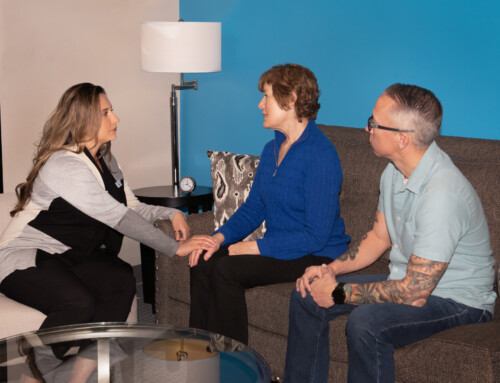
Clinical Care Coach Corner: Written by Gabriela Mendoza
Changes in the brain for someone living with dementia can cause them to be easily confused and disoriented, even in familiar places. Wandering is a common behavior for people living with dementia and can result in dangerous situations. We want to make sure you’re aware that even though someone may be living well with dementia, there are several ways to reduce the risk of wandering and tools that can be put in place to help locate someone in the case that wandering occurs.
When we look at some of the reasons why people wander, we find that they may be searching for someone or something, escaping an environment they feel trapped in, or maybe they are just reverting to familiar routines, such as attempting former responsibilities. A person may be trying to search for a familiar place or familiar face, especially if they are in a new environment. Someone may also wander to escape stress, anxiety, or overstimulation. Individuals may feel the need to constantly stay in motion and may be restless. Although wandering can happen outside of the home, anyone can become disoriented inside their own home as well. It’s important that we create a safe environment within the home to help the person navigate more easily and maintain their independence for as long as possible.
There are various tools individuals can use to reduce the risk of wandering such as increasing physical activity, modifying the home environment to ensure safety, providing visual clues for daily routines, and being aware of the environment. Increased physical activity is important because the more energy that is expended the less likely they are to become restless or bored. Meaningful activities during the day may help the person sleep better or provide them the opportunity to contribute to something greater than themselves. It is important to consider home safety motion sensor lights, door knob covers, alarms on door/windows. These devices can help alert a care partner if the person living with dementia is trying to leave unexpectedly. When a person living with dementia becomes disoriented in their own home, it may be helpful to post signs on cabinets, photos on doors to rooms such as bedrooms and bathrooms. Lastly, it is important to be aware of overcrowded environments, such as shopping malls or airports as they can create overstimulation, exhaustion, stress and fear.
If you are living in San Diego County, you’re in luck! We have a free registry through the Sheriff’s Department to act as a safeguard in the event that a person wanders. This is known as the “Take Me Home” program. It is important to think about whether the person living with dementia is able to communicate their name and address or other needs if they were lost. If you are unsure about how they would respond, you may want to consider enrolling in this program. This registry gives law enforcement access to the person’s home address, emergency contact information, information on medical conditions, and other pertinent needs. This information is safely secured and only law enforcement has access to this. More information on home safety or the Take Me Home Program, please call us at 858-492-4400 or visit this page.
Check out our free support groups, education classes, social activities, & more. You may also call our office at 858.492.4400 to speak directly to one of our Clinical Care Coaches (Spanish speakers also available).
Our “Clinical Care Coach Corner” series is where our dementia experts weigh in on topics they feel are necessary to discuss and provide insight that can help people affected by dementia.




